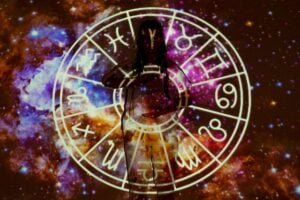The human mind is a complex entity, containing multitudes and depths that often go unexplored. Swiss psychiatrist Carl Jung delved into these depths in his landmark book “Man and His Symbols.” Written to make his theories accessible to a wider audience, the book offers transformative insights into the workings of our unconscious mind.
Uncovering the Language of the Unconscious
Jung asserts that our unconscious mind communicates with us through symbols—via our dreams, art, mythology, and even our daily lives. He considers these symbols as the language of the unconscious. Understanding this language allows us to tap into the vast knowledge and wisdom that often lie dormant within us.
Dreams: A Gateway to Self-Understanding
Jung views dreams as vital narratives that our unconscious mind constructs using symbols. They serve to express those aspects of our personality and experiences that our conscious mind may struggle to articulate. By analysing and interpreting these dreams, we can understand our deep-seated fears, desires, and tendencies, and use this knowledge for personal growth and self-improvement.
Individuation: The Journey to Wholeness
Jung’s process of ‘individuation’ involves acknowledging and integrating the various aspects of our psyche, both conscious and unconscious, to form a unified, authentic self. This process often involves encountering and reconciling with the ‘shadow’—the repressed, unacknowledged parts of our personality. By acknowledging and confronting our shadows, we can attain a more profound self-awareness and live more authentically, integrating all facets of our personality.
Ten Main Concepts
- Language of Symbols: Our unconscious mind communicates through symbols. Learning this language can unlock vast reserves of knowledge and wisdom.
- Collective Unconscious: We all share a ‘collective unconscious,’ a universal databank of experiences and knowledge inherited across generations.
- Archetypes: Archetypes are universal patterns of behaviour and thought that reside in our collective unconscious, shaping our reactions to the world.
- Importance of Dreams: Dreams are vital narratives that our unconscious mind constructs using symbols, expressing aspects of our personality that our conscious mind may not articulate.
- Dream Analysis: Analysing and interpreting our dreams can help us understand our deep-seated fears, desires, and tendencies, leading to personal growth and self-improvement.
- Individuation: The process of ‘individuation’ involves acknowledging and integrating all aspects of our psyche to form a unified, authentic self.
- The Shadow: Encountering and reconciling with the ‘shadow’—the repressed, unacknowledged parts of our personality—is a vital step in the individuation process.
- Self-Awareness: Confronting our shadows can lead to profound self-awareness, enabling us to live more authentically.
- Personal Transformation: Understanding and applying Jung’s concepts can lead to significant personal growth and transformation.
- True Self: The journey of individuation and personal transformation is not about becoming something new, but about becoming who we truly are.
The Collective Unconscious and Archetypes
An integral concept that Jung introduces is the ‘collective unconscious,’ a universal databank of experiences and knowledge inherited across generations. Within this collective unconscious reside ‘archetypes,’ symbolic representations of universal patterns of behaviour and thought, shaping our reactions to the world around us. Understanding these archetypes can provide a lens through which to view our behavior, reactions, and instinctual preferences, shedding light on our personal and professional relationships.
Breaking My Addictions Summary and Conclusion
This book provides a compelling exploration of our unconscious mind’s vast potential. It underscores the significance of understanding our dreams, decoding the symbols our unconscious uses to communicate with us, and acknowledging our collective unconscious’s universal patterns.
By applying these insights, we can embark on a journey of ‘individuation,’ towards a more unified and authentic self. This journey can lead to greater self-awareness, personal growth, and transformation, enabling us to tap into the potential that lies within our unconscious mind. As we navigate this journey, we are reminded that our growth is not about becoming something new, but rather about becoming who we truly are.













